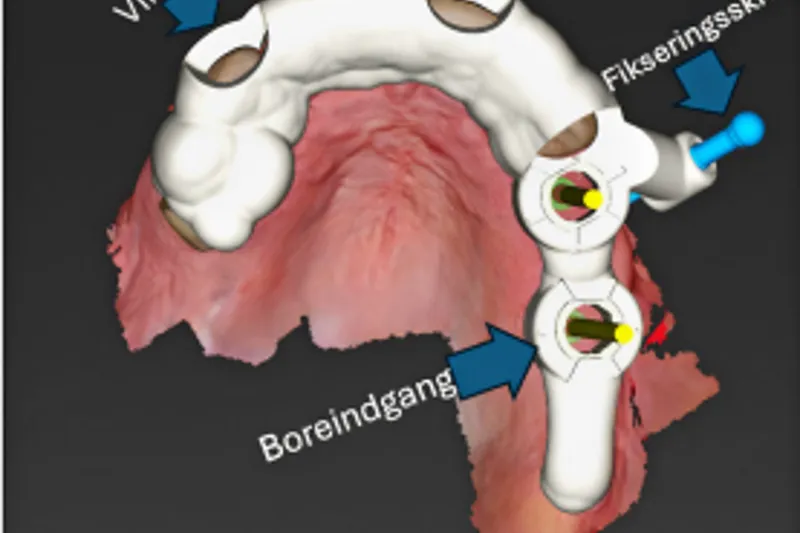Statisk computerassisteret implantatkirurgi
Med statisk computerassisteret implantatkirurgi (sCAIS) kan man på baggrund af Cone Beam Computed Tomography, intraoral scanning og computersoftwareprogrammer fremstille en guideskinne, der øverfører den virtuelt planlagte implantatposition til patienten.

Nøjagtig placering af implantater kan reducere risikoen for kirurgiske komplikationer og optimere både funktionelle og protetiske resultater. Med statisk computerassisteret implantatkirurgi (sCAIS) kan man på baggrund af Cone Beam Computed Tomography, intraoral scanning og computersoftwareprogrammer fremstille en guideskinne, der øverfører den virtuelt planlagte implantatposition til patienten. Der kan være udfordringer ved metoden, hvorfor kliniske og teknologiske aspekter, herunder dens begrænsninger og indikation på patienter med partielt tandtab, vil blive udfoldet i denne artikel.
Klinisk relevans:
I tilfælde, hvor implantater skal indsættes tæt på vigtige anatomiske strukturer eller i den æstetiske zone, kan statisk computerassisteret implantatkirurgi (sCAIS) være et alternativ til frihåndsimplantatkirurgi. Denne form for kirurgi kræver yderligere planlægning og tid til fremstilling af en specialfremstillet guideskinne, der kan hvile på tænder, tandkød eller knogle. Skinnen støtter borets retning og dybde, således at den virtuelt planlagte implantatposition overføres til patienten.
Static computer-assisted implant surgery
The accurate placement of implants can reduce surgical complications and optimise both functional and prosthetic outcomes. With static computer-assisted implant surgery (sCAIS), a guide stent can be fabricated based on cone-beam computed tomography (CBCT), intraoral scanning, and computer software programmes. This guide can rest on teeth, mucosa, or bone. This technology enables preoperative planning, allowing for the virtual placement of implants. Thus, sCAIS aims to position implants in accordance with the virtually planned position. Despite the advantages of the method, there may be challenges associated with it. Hence, this article will focus on the clinical and technological aspects, including its benefits, limitations, and indications for patients with partial edentulism.

